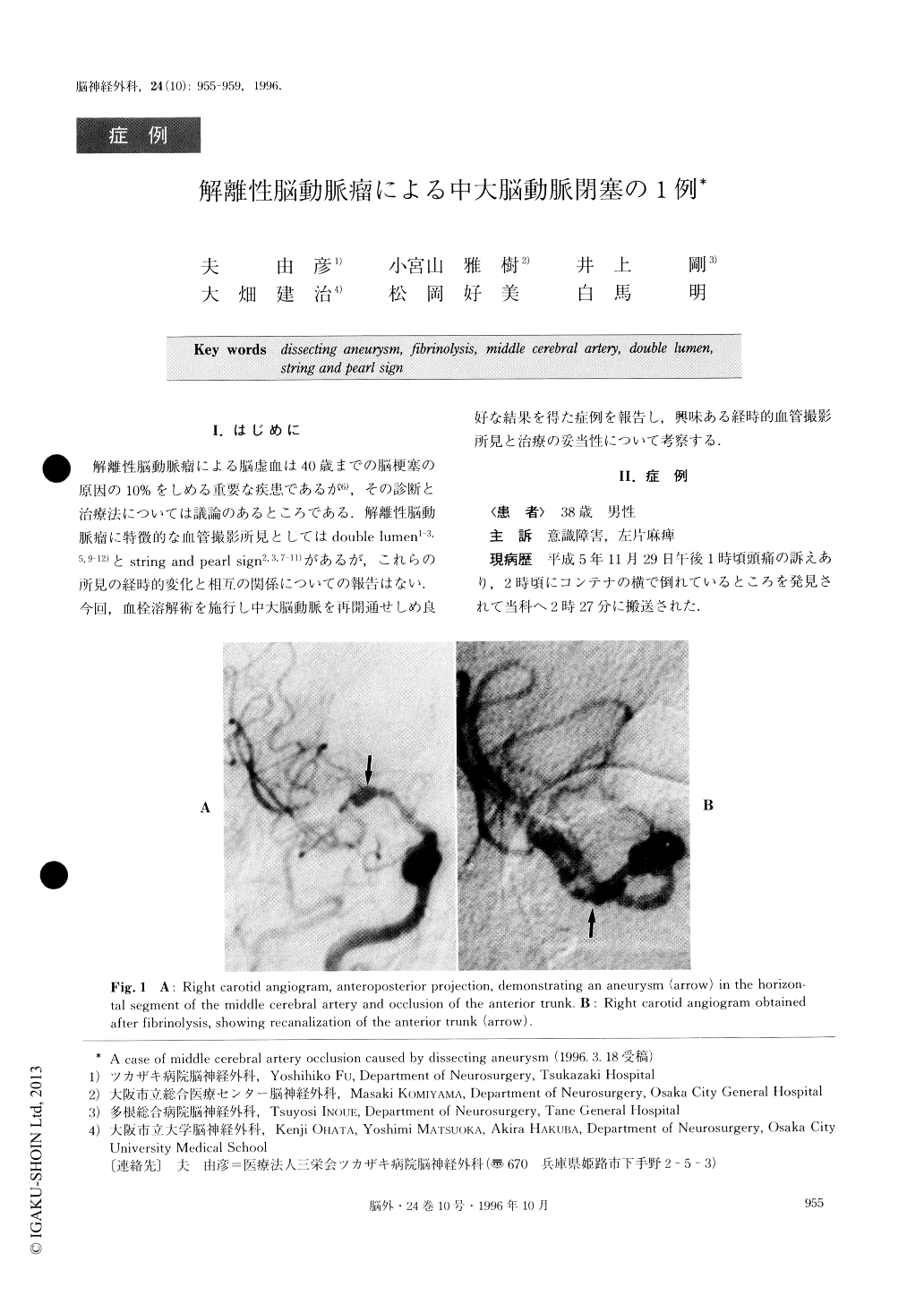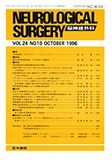Japanese
English
- 有料閲覧
- Abstract 文献概要
- 1ページ目 Look Inside
I.はじめに
解離性脳動脈瘤による脳虚血は40歳までの脳梗塞の原因の10%をしめる重要な疾患であるが6),その診断と治療法については議論のあるところである.解離性脳動脈瘤に特徴的な血管撮影所見としてはdouble lumen1-3,5,9,12)とString and pearl Sign2,3,7-11)があるが,これらの所見の経時的変化と相互の関係についての報告はない.今回,血栓溶解術を施行し中大脳動脈を再開通せしめ良好な結果を得た症例を報告し,興味ある経時的血管撮影所見と治療の妥当性について考察する.
We reported a case of middle cerebral artery occlu-sion caused by a dissecting aneurysm that was success-fully treated by intra-arterial fibrinolysis. A 38-year-old man suddenly developed left hemiparesis and became confused. He was transferred to our hospital one hour and 27 minutes after the ictus. Right carotid angiogram (CAG) revealed aneurysmal dilatation of the horizontal portion of the middle cerebral artery and occlusion of the anterior trunk. Twelve million IU of tissue plasmi-nogen activator was injected to fibrinolyze the throm-bus of the occlusion site through a microcatheter. After this, the patient became alert and hemiparesis dis-appeared. It took three hours and 30 minutes to gain recanalization after the ictus. Right CAG obtained the next day demonstrated the patency of the anterior trunk and the characteristic finding of the dissecting aneurysm viz “double lumen” as a result of fibrinolysis of the thrombus in the false lumen. Right CAG obtained two weeks later demonstrated “string and pearl sign” instead of the “double lumen” as a result of partial thrombosis in the false lumen. Follow-up CAG obtained nine months after the ictus demonstratedmarked reduction of the aneurysmal size as the result of progressing thrombosis of the false lumen. The char-acteristic angiographic findings of the dissecting aneu-rysm such as “double lumen” and “string and pearl sign” seemed to be mostly influenced by the status of the thrombus in the false lumen. In case of major cere-bral arterial occlusion caused by the embolus or throm-bus from the dissecting aneurysm, intra-arterial fibri-nolysis seems to be a possible treatment modality, even though it is accompanied by the risk of giving rise to subarachnoid hemorrhage.

Copyright © 1996, Igaku-Shoin Ltd. All rights reserved.


